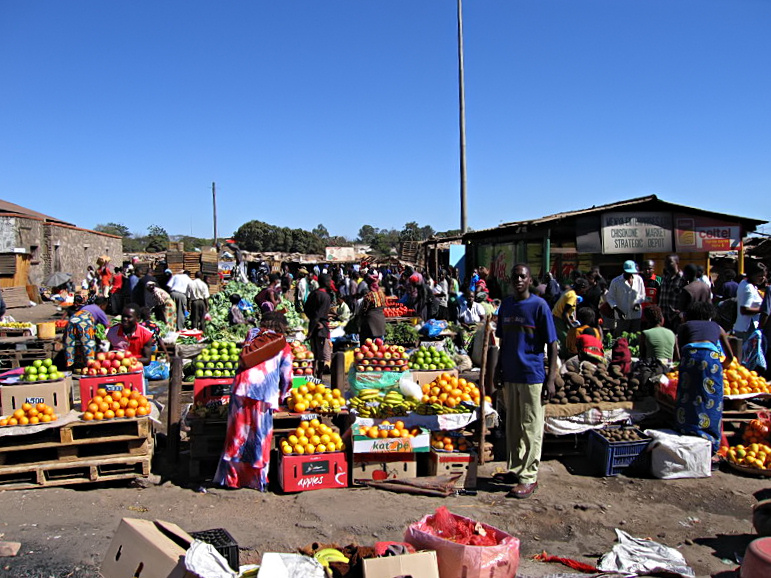Have you ever wondered what Zambia exports and where it goes to? The Central Statistical Office (CSO) regularly publishes information revealing the answers to this and other questions. A look at these statistics can be very instructive.
In December 2010 Zambia made 92% of its money from exports to 5 countries:
- Switzerland (61.2%)
- Copper Cathodes and sections of cathodes of refined copper
- Plates, sheets and strips of refined copper.
- China (14.9%)
- Copper blister; Cathodes & sections of cathodes of refined copper;
- Articles of cobalt.
- South Africa (10%)
- Cathodes and sections of cathodes of refined copper
- Semimanufactured gold (incl. gold plated platinum)
- Wire of refined copper
- The Democratic Republic of Congo (4.1%)
- Raw cane sugar, in solid form
- Portland cement (excl. white)
- Wheat or meslin flour
- Sulphuric acid.
- Belgium (1.8%)
- Maize (excluding seed)
- Ash and residues containing mainly copper
- Parts of air/vacuum pumps of air/gas compressors.
In July, 2011 the top five trade partners were shuffled differently:
- Switzerland (60%)
- Cathodes and sections of cathodes of refined copper
- Copper Blister
- Plates, sheets and strip, of refined copper, uncoiled
- Cotton, not corded or combed
- Gold compounds in bulk
- Cotton linters
- Other: articles of cobalt, nes
- Wire of refined copper
- Cotton seeds
- China (14.1%)
- Copper blister
- Copper alloys, nes, unwrought
- Cathodes and sections of cathodes of refined copper
- Nickel ores and concentrates
- Other: Articles of cobalt, nes
- Wood, nes sawn or chipped lengthwise, sliced or pe
- Ash and residues containing mainly copper
- Manganese ores/concentrate
- Other
- South Africa (7.4%)
- Other: articles of cobalt, nes
- Semi-manufactured gold
- Wire of refined copper
- Cotton, not corded or combed
- Electric conductors, nes
- Cathode and sections of cathodes of refined copper
- New stamps: stamp-impressed paper: cheque forms
- Copper alloys, nes, unwrought
- Refined lead, unwrought
- Stranded wire, cables – of copper (not electrical)
- Other products
- Congo DR (4.4%)
- Raw cane suger, in solid form
- Suphuric acid, oleum in bulk
- Portland cement (excluding white)
- Suphur, sublimed or precipitated: colloid sulphur
- Sodium sulphites in bulk
- Wheat or meslin flour
- Other mixtures with basis of odoriferous substances
- Other prepared explosives
- Other oils and their fractions
- Other palm oil & its fractions
- United Kingdom (2.9%)
- Cathodes and sections of cathodes of refined copper
- Plates, sheets and strips of unrefined copper, uncoiled
- Mixtures of vegetables, frozen
- Copper alloys, nes, unwrought
- Maize (excluding seed)
- Coffee, not roasted or decaffeinated
- Fresh cut roses and buds
- Tobacco, not stemmed/stripped
- Transformers, nes
- Other vegetables, fresh or chilled
Zambia is still heavily dependent on mineral exports. While this is an indicator of insufficient diversification of the economy, there are signs that agriculture is beginning to pick up alongside the mining economy.
There are a lot of big international markets that Zambia still has not exploited. Agriculture and manufacturing are potential labour intensive employers that have a huge potential for expansion. This can favourably impact on the drive to reduce the unemployment rate.
Very few business people go out of their way to visit neighbouring countries with a view to exploring new markets. One of the problems is that the exposure of Zambian businesses on the international scene is still very rudimentary. Investors looking to exploit Zambia’s political stability and resources struggle to get information about local suppliers.
Expansion of the economy requires political will as well as willingness of businesses to exploit the new medium of the internet to achieve wider dissemination of information about their products. It is now cheaper than ever to establish an internet presence. This helps businesses to make new contacts and to forge stronger ties with their local customer base.
All business people are hoping that the forthcoming elections will continue to provide Zambia with a stable political platform. The new civil and political leaders will have the responsibility of carrying on and improving on this legacy.
The final responsibility lies with businesses and with individuals to exploit the business potential that exists in Zambia.


